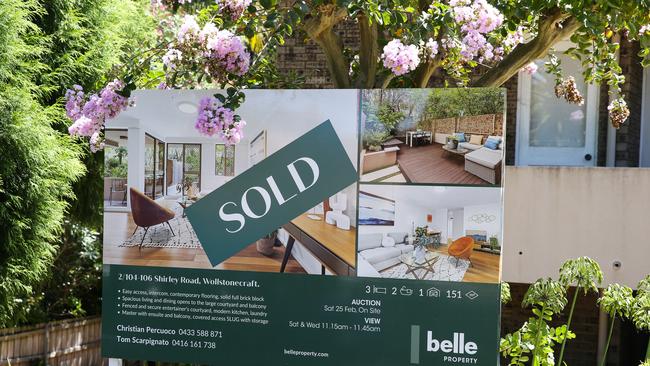High chance of three rate cuts in 2024, financial markets predict
Even if rates are lowered by 1 percentage point over the coming two years as financial markets expect, borrowers will be left substantially higher home loan repayments than before the pandemic.

Mortgage holders struggling with the most aggressive series of interest rate rises in a generation could receive much-needed relief this year, with financial markets predicting the Reserve Bank will deliver two or three rate cuts.
Since the pandemic, indebted homeowners with an average loan of $610,000 have been forced to find room in their budgets for an extra $18,500 a year in repayments as a result of soaring borrowing costs and substantially higher levels of indebtedness.
Traders are pricing in the first rate cut to 4.1 per cent by June, with a high chance of an earlier move by May.
The next move lower will come by September, and financial markets are factoring in a nearly 0.75 per cent cut to 3.6 per cent by the end of the year, before another cut by around August 2025.
NAB senior economist Taylor Nugent said while no forecast was ever perfect, the prices baked into funding markets had to be taken seriously.
“We’ve seen through this cycle that market pricing (for rates) moved higher more quickly than the RBA or economists were expecting, which was shown to be correct. But it can be swung around by what’s happening offshore, particularly by US Fed policy, and that can feel detached from conditions in Australia,” Mr Nugent said.
Rates relief in 2024 is no sure thing, or at least not to as great an extent as markets predict. Some economists, including those at NAB, believe the RBA has more work to do to tame inflation, and tip another rate rise in February.
“We do still have a rate hike pencilled in for February,” Mr Nugent said.
Financial markets have likely overreacted to developments in the US and Europe, where central bankers appear increasingly confident they have regained control of inflation, he said.
“The RBA is increasingly focused on homegrown inflation and will be behind the Fed and ECB in a cutting cycle.
“Market pricing for rate cuts has gotten a bit ahead of itself. We don’t think they (the RBA) will be in a position to be cutting until the December quarter.”
Even if the central bank lowers borrowing costs by one percentage point over the next two years, as markets predict, that will leave the cash rate substantially above the 0.75 per cent rate leading into the pandemic.
The average Australian mortgage was $610,000 in October, according to the latest ABS figures, far larger than the $482,000 average four years earlier and before the ultra-low interest rates through the pandemic turbocharged the property market.
The average interest rate on outstanding loans is now 6.17 per cent, according to RBA data, versus 3.64 per cent in late 2019.
Bigger mortgages and higher rates than before the health crisis have left indebted homeowners’ repayments up by more than 60 per cent compared to before the pandemic, at an average of $3994 a month, versus $2449.
With RBA governor Michele Bullock warning rates may still need to rise further, AMP chief economist Shane Oliver said there remained a “significant risk” of a further hike. Still, Dr Oliver believed the intense pressure on households meant the next move would be down, with cuts starting from mid-2024, in line with the market pricing.
A housing affordability crunch would drag on prices this year, he said, before rates relief supported the property market in late 2024.




To join the conversation, please log in. Don't have an account? Register
Join the conversation, you are commenting as Logout